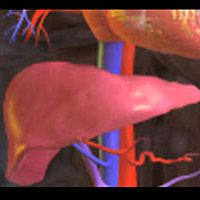Magnetic Resonance to Help Detect and Quantify Liver Fat
Magnetic resonance is an effective alternative to biopsy for identifying and quantifying fats in the liver, according to results from a study led by a research team at the University of the Basque Country.

Magnetic resonance is an effective alternative to biopsy for identifying and quantifying fats in the liver, according to results from a study led by a research team at the University of the Basque Country.
Accumulation of abnormal lipids within liver cells results in non-alcoholic fatty liver disease (NAFLD), which has been rising in prevalence in tangent with obesity. As this is a risk factor for cirrhosis and hepatocellular carcinoma, novel detection approaches are necessary to monitor lipid content level to enable early diagnosis and more effective disease control and treatment.
Published in BMC Medicine, the study illustrates that magnetic resonance is a far more reliable method than hepatic biopsy, currently the most widely used method for detecting fat in the liver. While abdominal ecography is a type of imaging technique employed for identification, it typically delivers results that are much less accurate.
Led by Luis Bujanda, Professor of medicine at the University of the Basque Country, and director of the Area of Research into Hepatic and Gastrointestinal Diseases at the Biodonostia Health Research Institute, the research team observed 97 obese patients and 32 others who were afflicted with various hepatic pathologies and had undergone surgical intervention. Their primary goal was to compare multi-echo MRI fat fraction, grade of steatosis estimated by histopathology, and biochemical measurement of hepatic triglycerides.
These experts utilized 3 different fat locating methods: hepatic biopsy, magnetic resonance, and the biochemical determination of fat. They concluded multi-echo MRI is indeed an accurate and non-invasive means of effectively determining hepatic lipid concentration.
Jesús Bañales, researcher at Biodonostia HRI, said, “Magnetic resonance is a very useful technique to determine the presence of fat or not in the liver, the quantity of the same and in order to evaluate the efficacy of treatment applied over a long period. It is possible that in the future we will be able to determine, apart from fat, the degree of inflammation and hepatic fibrosis.”